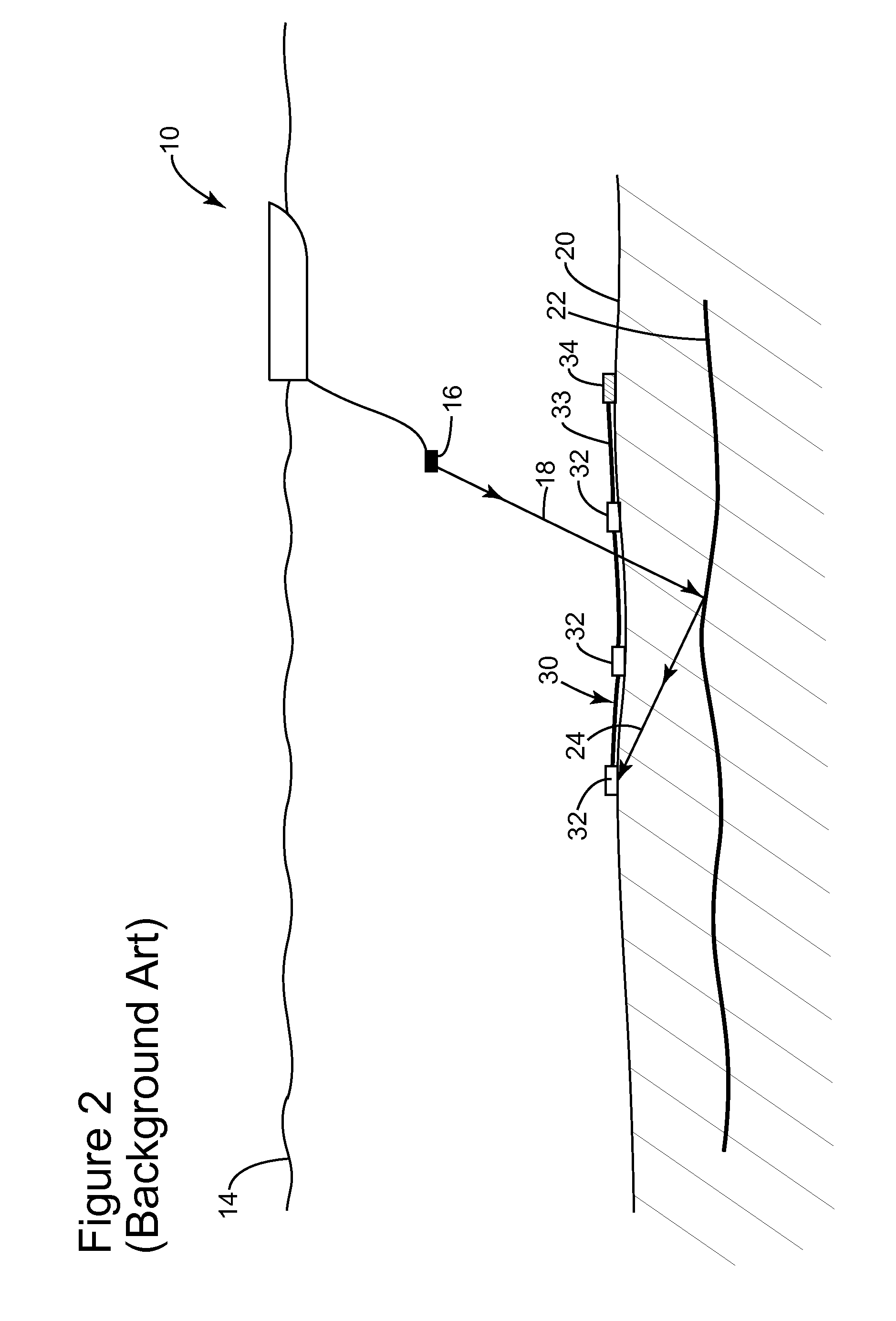Image-domain 4d-binning method and system
a technology of image-domain and binning, applied in the field of methods and systems, can solve the problems of 4d noise generation, 4d generation, and the interpolation of traces to a common surface data domain does not ensure the level of wavefield sampling at the common level, so as to maximize similarity and increase similarity
- Summary
- Abstract
- Description
- Claims
- Application Information
AI Technical Summary
Benefits of technology
Problems solved by technology
Method used
Image
Examples
Embodiment Construction
[0031]The following description of the exemplary embodiments refers to the accompanying drawings. The same reference numbers in different drawings identify the same or similar elements. The following detailed description does not limit the invention. Instead, the scope of the invention is defined by the appended claims. The following embodiments are discussed, for simplicity, with regard to seismic data collected during a base survey and a monitor survey, wherein the base survey was conducted with streamers and the monitor survey was conducted with ocean bottom nodes (OBNs). However, the embodiments to be discussed next are not limited to these kinds of surveys. For example, the novel embodiments may be applied to a base survey conducted with OBNs and a monitor survey conducted with streamers. More generally, the novel embodiments are successful for base and monitor seismic surveys that may have different information content and / or wavefield sampling.
[0032]Reference throughout the s...
PUM
 Login to View More
Login to View More Abstract
Description
Claims
Application Information
 Login to View More
Login to View More - R&D
- Intellectual Property
- Life Sciences
- Materials
- Tech Scout
- Unparalleled Data Quality
- Higher Quality Content
- 60% Fewer Hallucinations
Browse by: Latest US Patents, China's latest patents, Technical Efficacy Thesaurus, Application Domain, Technology Topic, Popular Technical Reports.
© 2025 PatSnap. All rights reserved.Legal|Privacy policy|Modern Slavery Act Transparency Statement|Sitemap|About US| Contact US: help@patsnap.com



